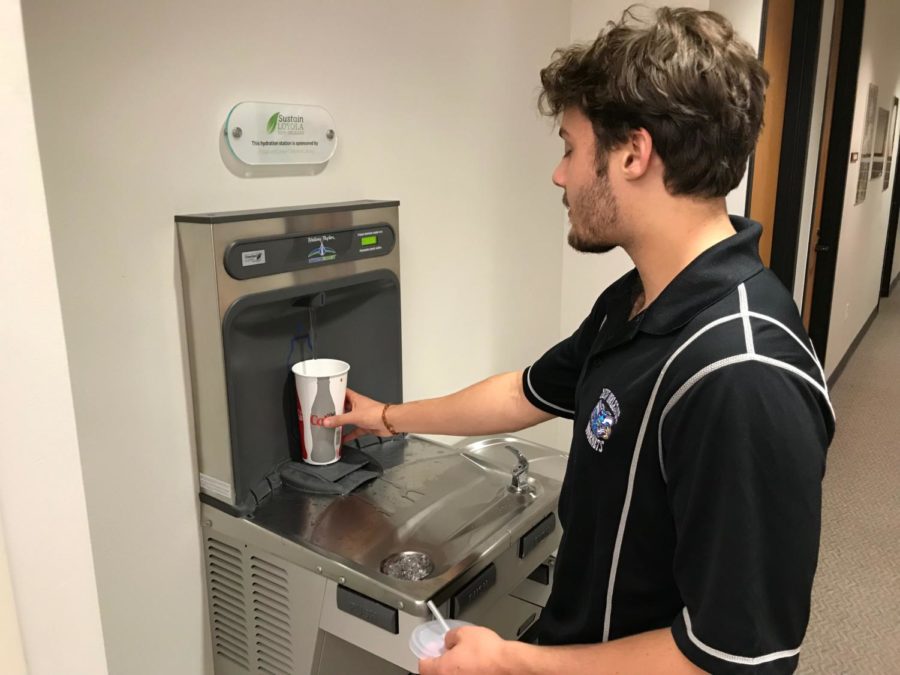Water refill stations reduce plastic bottle use
Mass communication junior Nick Boulet uses a water refill station in the Monroe Library. The stations have eliminated waste from millions of water bottles. Photo credit: John Casey
November 1, 2017
Loyola’s sustainability initiative in 2012, intended to implement water refill stations around campus, has eliminated waste from just over three quarters of a million disposable water bottles as of this week, according to the stations’ latest count.
But some students argue that there is still room for improvement.
Between nine buildings on campus, students and staff have access to 15 stations where they can vertically align water bottles under a sensor spigot, automatically refilling them with filtered fountain water. Each station is equipped with a meter that tracks how many containers have been refilled rather than bought and displays the equivalent number of disposable water bottles not used as a result.
According to Bob Thomas, chairman of the sustainability committee, when a new filter is put in at a fountain, the numbers on the meter likely reset. This means that in the five years the stations have been utilized and the countless times their filters have been changed, it can be assumed that Loyola students and staff have prevented waste from millions of plastic bottles since the stations were implemented.
Marketing senior Alex Gaston said that he uses the stations up to six times a day, depending on how often he has class.
“I have a water bottle that I bring to school every day and it saves me money by not having to spend $3 a day on a water bottle. Also I am not throwing away a plastic bottle every day, which is reducing my carbon footprint,” he said.
However, many students expressed the need to implement more stations in specific buildings. Monroe Hall is the only building with stations on all six floors. Bobet Hall, the Danna Center, Loyola’s sports complex and library each have one while the mass communication building has two. Additionally, each dorm is equipped with one on the first floor. Marquette Hall, Miller Hall, Mercy Hall and Stallings Hall have none.
“It is frustrating that the school I spend the most time in does not have a refill station to begin with, but worse that the fountains we do have in Miller produce water really slow and have inconsistent pressure,” marketing major Julia Abadin argued, a point echoed by Gaston as well.
Lauryn Kidd, Biever Hall resident, suggested placing more refill stations in the dorms.
“It is nice to have a refill station in the building, but I wish there was one on each floor so people could fill their water bottles without having to go down to the lobby,” Kidd said.
Despite complaints regarding the lack of refill stations in desired locations, students expressed an appreciation for those currently established and said they wish to see more around campus in the future.
“The refill stations are so efficient and convenient, and such an easy way for students at Loyola to participate in sustainability efforts. I don’t know why you wouldn’t use them,” Abadin said.







